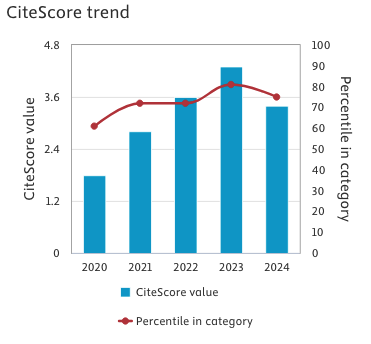Allogeneic plasma gel in II Degree Burn: A case report
Keywords:
Plasma Skin Regeneration, Allografts, Plasma gelAbstract
Skin burns are injuries caused by physical and chemical mechanisms, with thermal burns from fire being the most common. These injuries can cause death or long-term disability; The use of orthobiological agents such as platelet-rich plasma and its derivatives have shown good results in chronic wounds and skin lesions.The present study presents the case of a 1 year 6-month-old child who suffered a second-degree thermal burn on the palm of his right hand, which caused him a lot of pain and was resistant to analgesics. For this reason, it was decided to perform a regenerative therapy based on debridement and application of 2 sessions of allogeneic plasma gel, from the mother, as a biofilm, in addition, topical antibiotic cream was added to cover the wound. After 8 days of the first application, the wound had re-epithelialized adequately, with almost no evidence of the previous burn, which allowed rapid rehabilitation and complete recovery. Allogeneic plasma gel could be a safe, low-cost and effective option for the healing of second-degree burns and an alternative to skin autografts or xenografts.
References
1. Jeschke MG, van Baar ME, Choudhry MA, Chung KK, Gibran NS, Logsetty S. Burn injury. Nat Rev Dis Primers. 2020;6(1):11. doi: 10.1038/s41572-020-0145-5
2. Roshangar L, Kheirjou R, Ranjkesh R. Skin burns: review of molecular mechanisms and therapeutic approaches. Wounds. 2019;31(12):308-15.
3. Smolle C, Cambiaso-Daniel J, Forbes A, et al. Recent trends in burn epidemiology worldwide: a systematic review. Burns. 2017;43(2):249-257. doi: 10.1016/j.burns.2016.08.013
4. Guest JF, Fuller GW, Edwards J. Cohort study evaluating management of burns in the community in clinical practice in the UK: costs and outcomes. BMJ Open. 2020;10(4):e035345. doi: 10.1136/bmjopen-2019-035345
5. Jiménez R, García F. Manejo de las quemaduras de primer y segundo grado en atención primaria. Gerokomos. 2018;29(1):45-51.
6. Yao Y, Zhang A, Yuan C, Chen X, Liu Y. Recent trends on burn wound care: hydrogel dressings and scaffolds. Biomater Sci. 2021;9(13):4523-40. doi: 10.1039/d1bm00411e
7. Zheng W, Zhao DL, Zhao YQ, Li ZY. Effectiveness of platelet rich plasma in burn wound healing: a systematic review and meta-analysis. J Dermatolog Treat. 2022;33(1):131-7. doi: 10.1080/09546634.2020.1729949
8. Huang H, Sun X, Zhao Y. Platelet-rich plasma for the treatment of burn wounds: a meta-analysis of randomized controlled trials. Transfus Apher Sci. 2021;60(1):102964. doi: 10.1016/j.transci.2020.102964
9. Hernández-Patiño I, Rossani G, De La Cruz VJA, Casado FL, Trelles MA. Tratamiento de quemaduras mediante plasma heterólogo rico en plaquetas (PRPh). Cir Plast Ibero-Latinoam. 2020;46(4):483-8. doi: 10.4321/s0376-78922020000400013
10. Benavides J. Reparación de heridas cutáneas. Rev Asoc Colomb Dermatol Cir Dermatol. 2019;16(1):29-35.
11. Dos Santos RG, Santos GS, Alkass N, et al. The regenerative mechanisms of platelet-rich plasma: a review. Cytokine. 2021;144:155560. doi: 10.1016/j.cyto.2021.155560
12. Jiménez N, Pino A, Segurado G, et al. Autologous platelet-rich gel for facial rejuvenation and wrinkle amelioration: a pilot study. J Cosmet Dermatol. 2019;18(5):1353-60. doi: 10.1111/jocd.12823
13. Poon IK, Hulett MD, Parish CR. Molecular mechanisms of late apoptotic/necrotic cell clearance. Cell Death Differ. 2010;17(3):381-97. doi: 10.1038/cdd.2009.195
14. Rossani G, Hernández I, Alcolea JM, Castro-Sierra R, Pérez-Soto W, Trelles MA. Tratamiento de quemaduras mediante plasma rico en plaquetas (PRP): parte I. Cir Plast Ibero-Latinoam. 2014;40(2):229-38. doi: 10.4321/s0376-78922014000200015
15. Moya GM, Muñoz PD, Poaquiza PA, Apolo KY, Lema IA. Actualidad del manejo de las lesiones por quemaduras críticas: update on the management of critical burn injuries. Lat Am. 2024;5(1):1531-46. doi: 10.56712/latam.v5i1.1691
16. González M, Arteaga-Vizcaíno M, Benito M, Benito M. Aplicación del plasma rico en plaquetas (PRP) y sus derivados en implantología dental y cirugía plástica. Invest Clin. 2012;53(4):408-18.
17. Fujioka-Kobayashi M, Schaller B, Mourão CFAB, Zhang Y, Sculean A, Miron RJ. Biological characterization of an injectable platelet-rich fibrin mixture consisting of autologous albumin gel and liquid platelet-rich fibrin (Alb-PRF). Platelets. 2021;32(1):74-81. doi: 10.1080/09537104.2020.1717455
18. Bertozzi N, Simonacci F, Grieco MP, Grignaffini E, Raposio E. The biological and clinical basis for the use of adipose-derived stem cells in the field of wound healing. Ann Med Surg (Lond). 2017;20:41-8. doi: 10.1016/j.amsu.2017.06.058
19. Raposio E, Simonacci F, Perrotta RE. Adipose-derived stem cells: comparison between two methods of isolation for clinical applications. Ann Med Surg (Lond). 2017;20:87-91. doi: 10.1016/j.amsu.2017.07.018
20. Simonacci F, Bertozzi N, Raposio E. Off-label use of adipose-derived stem cells. Ann Med Surg (Lond). 2017;24:44-51. doi: 10.1016/j.amsu.2017.10.023
Downloads
Published
Issue
Section
License
Copyright (c) 2025 Joan Pedraza-La Barrera , Gustavo A. Quispe-Villegas, Lizzie Karen Becerra-Gutiérrez, Stalin Tello-Vera

This work is licensed under a Creative Commons Attribution-NonCommercial 4.0 International License.
This is an Open Access article distributed under the terms of the Creative Commons Attribution License (https://creativecommons.org/licenses/by-nc/4.0) which permits unrestricted use, distribution, and reproduction in any medium, provided the original work is properly cited.
Transfer of Copyright and Permission to Reproduce Parts of Published Papers.
Authors retain the copyright for their published work. No formal permission will be required to reproduce parts (tables or illustrations) of published papers, provided the source is quoted appropriately and reproduction has no commercial intent. Reproductions with commercial intent will require written permission and payment of royalties.






